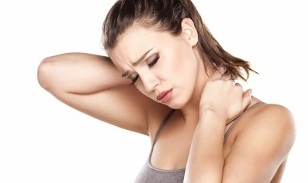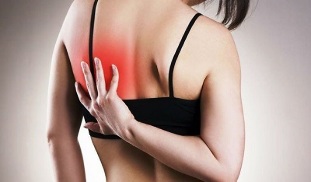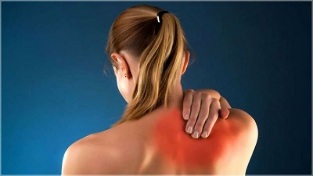
Osteochondrosis is about twice as common in women as in men. The reasons for this are in the features of anatomy and physiology, as well as in lifestyle and traditional ideas.
The symptoms and treatment of cervical osteochondrosis in women are generally similar to those in men. However, there are special cases due to biological differences.
Symptoms of cervical osteochondrosis in young and adult women
Previously, it was believed that osteochondrosis most often occurred in women "over 50 years. "However, in recent years, cervical osteochondrosis has sharply "rejuvenated", it is no longer rare to find a woman in her 30s.
The manifestations of osteochondrosis in women and men are similar: pain when moving, crushing, headache, visual and hearing impairments, extremities, jaw, part of the face. Fewer women experience nausea than men. However, the conditions for the symptoms of the disease are different in different sexes. In men, it is caused by more injuries and excessive stress.
The symptoms of cervical osteochondrosis in women depend on other factors.
- Objectively, women's muscles and bones are weaker - that's physiology. For this reason, a woman's spine is subjected to more severe stress. More than one person. Due to the lack of a muscle corset.
- Hormonal factor affects the condition of the spine. Therefore, the appearance and exacerbation of osteochondrosis in young women is the beginning of pregnancy and menstruation, in adult women - menopause.
- Women traditionally do a lot of housework that requires a slight bowing of the head. Harmful to the neck. One of the signs of damage to the 7th cervical vertebra even got the name "woman" - "widow" or "housewife's role". In men, this symptom is almost non-existent.
- Other types of work that lean forward slightly lead to the same result. This position should be held on a computer or desk, and there are many representatives of "sedentary" professions (teachers, secretaries, cashiers, dispatchers) among women.
- Older women of retirement age "wave to themselves" under the influence of unfounded traditions. They stop watching their weight and lead a sedentary lifestyle. These are favorable conditions for osteochondrosis.
- Women suffer more from diet addiction than men. Nutritional imbalance leads to osteochondrosis and its exacerbation.
These factors cannot be avoided. However, in women, you can detect the symptoms of cervical osteochondrosis in time, and treatment will give a positive result.
Pain syndrome: what pain can occur with cervical osteochondrosis
Pain is one of the main symptoms of osteochondrosis. However, it is important to know what pain can occur in cervical osteochondrosis. This is necessary in order not to treat a disease that does not exist ineffectively instead of osteochondrosis, and not to miss the threatening symptoms disguised as osteochondrosis.

More often, there is pain in the neck with osteochondrosis: sharp or dull when moving, pain for a long time. However, this pain immediately indicates a spinal lesion. It gets worse when given to completely different organs. This is due to compression of the deformed vertebrae and discs of nerve roots and blood vessels.
- Headaches can occur in different areas (depending on which vertebrae are damaged). This type of pain can be confused with migraine, neuritis, VSD.
- Sometimes shoulder pain occurs, especially when trying to raise the arm. There is no point in treating bursitis.
- The pain can spread to the whole arm. Typically, this symptom only works on one side.
- The most dangerous option is pain under the chest or shoulder blade. Heart disease can even be confused with symptoms of myocardial infarction. If osteochondrosis forces you to bother your cardiologist unnecessarily, nothing will happen. The first signs of a heart attack are worse if confused with osteochondrosis.
The intensity of the pain may vary. In the early stages, there are periodic lumbago and dull pains from muscle tension. However, with the development of the disease, the lumbago can become unbearable in the true sense of the word and deprive the patient of the ability to move his head completely.
Osteochondrosis with radicular syndrome in women
If this phenomenon occurs in the lower back, it is usually called radiculitis. Its essence is the compression of nerve roots extending from the spinal cord by deformed spinal and intervertebral discs.
Radicular syndrome manifests itself in the severity of acute symptoms - severe pain and inflammation, dizziness, fainting, panic attacks. It occurs only if the disease is poorly treated or not at all. This is the growing danger for women in our country - they tend to "tolerate", "ignore the little things" or be content with folk remedies, and this is not always acceptable.
Osteochondrosis with radicular syndrome cannot be treated on its own. It manifests itself when the dislocated discs are already protruding, forming a hernia and growths on the vertebral bodies. Stopping the diagnosis and professional intervention on the spine is required to stop this process. And the obvious symptoms can not be eliminated by home methods.
Cervical osteochondrosis in women in the acute stage
Exacerbation of osteochondrosis occurs periodically in all patients. It is possible to determine the onset of inflammation by increasing the manifestation of symptoms and the appearance of new ones (pain intensifies, headache or fainting, vision is impaired, insomnia occurs. . . ). In women, snoring during sleep can also be a sign of inflammation. But it is more important to know what causes it to ignite. Avoid them or be prepared to fight the disease.

Typical cases - sudden lifestyle changes, heavy physical activity, infectious disease, stress, trauma. However, women also have specific body conditions that can lead to poor well-being.
- Women who are worried about excess weight are more likely to resort to tiring diets. And no one cares how it will affect your health. And a radical diet can cause serious damage to the spine.
- If you have osteochondrosis, women should expect it to get worse during menstruation or pregnancy. The same thing can happen when using hormonal contraceptives - osteochondrosis is sensitive to hormonal imbalance. This affects the health of the joints.
- Menopause is a serious factor that affects the spine. Older ladies should be especially careful for themselves. However, the majority of patients with osteochondrosis are older.
In the acute stage, cervical osteochondrosis is treated in women as in men. In some cases, hormone therapy (or discontinuation) may be required. You should not act alone, home remedies are used during remission.
Treatment of cervical osteochondrosis in women: features
To be precise, no. Women are given the same medications as men:
- analgesics;
- non-steroidal anti-inflammatory drugs;
- muscle relaxant to relax muscles;
- drugs to normalize blood pressure and relieve vascular spasms;
- vitamin complexes;
- Chondroprotectors for cartilage tissue regeneration.
These drugs can be offered in the form of injections (in severe cases), tablets or topical treatment. Prescribed by a doctor. It also recommends massage and physiotherapy procedures - without which osteochondrosis cannot be treated. Therapeutic gymnastics is a must and is the same for women and men.
Women are often given sedatives. Although women (contrary to popular belief) are more resistant to stress, nervous reactions are more pronounced. Hot flashes, depression, panic can adversely affect treatment.
Folk remedies for osteochondrosis of the neck
Symptoms and treatment of cervical osteochondrosis in women are often associated with nervous reactions. Soothing teas should be recommended especially for women. They can be made from lemon balm, chamomile, mint. There are herbal remedies available for sale. This will improve your overall health, sleep, and tune in to fight the disease.
You can use folk remedies to relieve pain - horseradish leaves or burdock, steamed chrysanthemum. Compresses should not be too hot - it is dangerous for the blood vessels of the brain. Homemade ointments are also suitable as a warming agent. You can prepare a mixture of mummy and butter (1: 1) or petroleum jelly (in grams: 100: 20: 3: 2) by adding honey, mint and red pepper. Suitable for grinding and vodka-pepper.
Baths with pine needles (you can use ready-made extract) or sea salt and oak leaves are very suitable for remission or for temporary pain relief.
And naturally, women need to exercise regularly and lead a moderately active lifestyle to strengthen the muscular corset around the waist.
Symptoms of cervical osteochondrosis in women are not difficult to diagnose and cannot be treated. It is more important for women to be more careful about themselves and to lead a rational lifestyle.





































